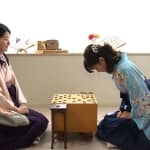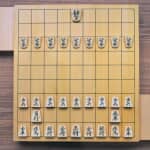Shogi 19 October 2016
Enjoy Shogi with People in the World!
One attractive point of Shogi is that we can play it with anybody regardless of gender or age of a player. Age gap or physical strength difference between the players does not matter to play Shogi in a serious match.
Well, you may say, “Isn’t that possible only in Japan?” Truly, Japanese Shogi is played most in Japan.
However, brothers of Shogi are being played even at this moment in somewhere in the world.
Chess and Shogi have a common ancestor. Thus, they are brothers. As a matter of fact, Shogi has many other brothers in the world. I would like to talk about Shogi’s ancestor and four brothers in the world today.
1. Caturaṅga – Why does Shogi have brothers in the world?
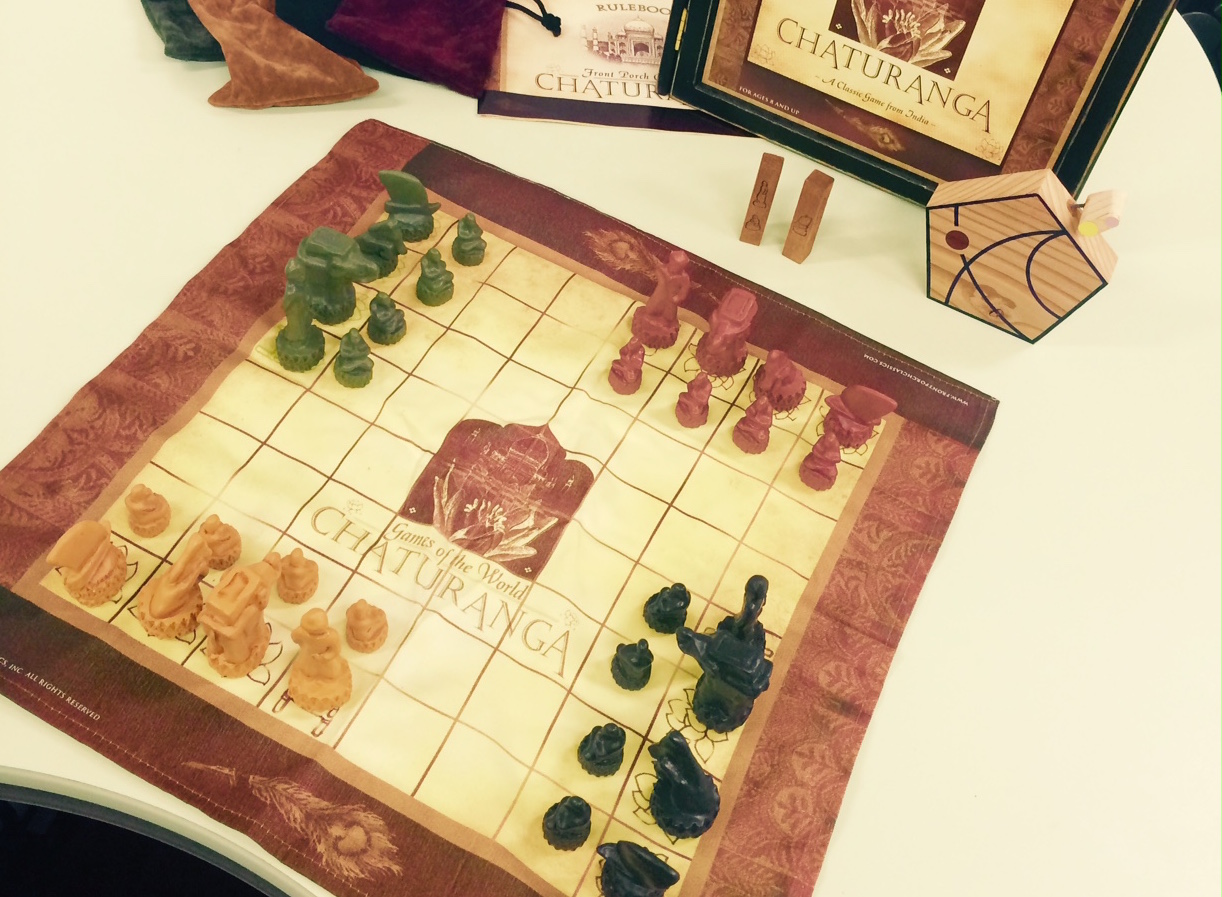
I said that Shogi and the world famous chess are brothers sharing the common ancestor. The ances-tor is called Caturaṅga. It is said that Caturaṅga was originated in India.
We are not very sure about exactly when people started to play Caturaṅga, but it is said around the third or second century B. C. People already enjoyed the ancestor of Shogi in India over 2000 years ago.
Caturaṅga disseminated toward the East and the West, and changed itself adjusting to the environ-ment in the each region. Then, the Shogi brothers introduced in the followings were born. We have a majestic theme today, don’t we?
Caturanga’s pieces are called “King,” “General,” “Elephant,” “Horse,” “Chariot,” and “Foot-soldier.” King moves one square in any direction. Elephant moves two squares in any diagonal direction, jumping over the first square. Horse moves the same as a “KEIMA,” or “Knight” in Shogi. Foot-soldier moves one square forward. These are the basic moves. We can see these moves remained in several Shogi brothers.
Let’s compare Caturanga and Shogi. On its way to Japan, Elephant disappeared as it did not exist in Japan. The functions of General are divided and changed into “Kinsho,” or “KIN (Gold)” and “Ginsho,” or “GIN (Silver).” It is very interesting to find those changes.
2. Chess – The most international brother of Shogi-

Chess is Shogi’s brother and is popular in Europe. As there are many chess fans in Japan, as well, we can say that this is the most major brother of Shogi. I think that many know chess since we see this game in many European movies and plays such as Harry Potter series.
It is said that chess was introduced to Europe from India through the Middle East. The eighth cen-tury chess pieces were found in Europe. Various unique elements of chess were added in Europe until the fifteenth or sixteenth century. Chess has the following kinds of pieces: “King,” “Queen,” “Rook,” “Bishop,” “Knight,” and “Pawns.” Among these pieces, except for Queen and Bishop, all the other pieces move just as same as Caturanga pieces. Rook moves just like Chariot and Knight does like Horse. Yet, these pieces changed their names when the game came into European culture. I sense Europe in their new names such as Queen and Bishop.
3. Makruk – A brother similar to Shogi

Makruk is another brother, of Shogi and is popular in Thailand. Its features are particularly close to those of old version of Shogi in many ways.
- There is a piece called “Khon” which moves just like GIN of Shogi.
- Foot-soldiers are promoted when entering the third rank of the opponent’s camp.
- King and some other pieces are located in the first rank, foot-soldiers are in the third rank of your own camp, but no pieces in the second rank.
It is surprising to find such a brother in Thailand since it is so similar to Shogi!
Although Malruk is very similar to Shogi, I think its play style is different from that of Shogi, since Japanese Shogi has a unique rule to be able to reuse the captured pieces. Shogi also has an unusual rule that we can capture a foot-soldier when two soldiers directly face each other. Thus, I think Makruk is more like chess in terms of the piece moves.
Makruk has the following pieces; “Feudal lord (khun),” “Seed (met),” “Nobleman/Mask (khon),” “Horse (ma),” “Boat (ruea),” “Cowry shell (bia).” It is said that Buddhist temples influenced these piece figures. I think that sounds very Thai.
4. Xiangqi – Rules full of Chinese elements
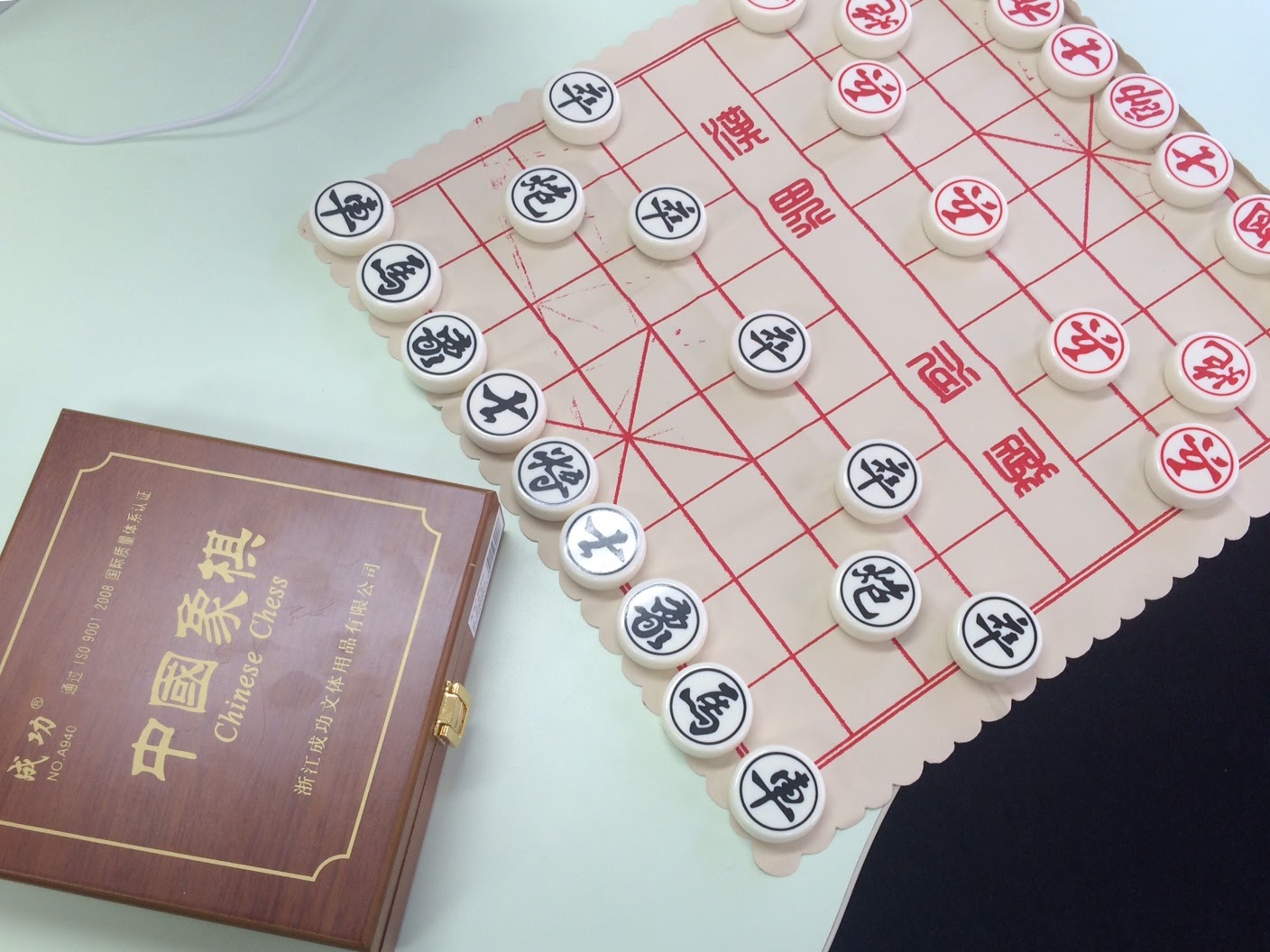
Xiangqi is a brother of Shogi and is popular among people speaking Chinese. It is said that the numbers of Xiangqui players are second to those of chess or almost equivalent since Chinese speak-ing population is significant.
The notable about Xiangqi is its board surface. In the center of the board, there are rivers modeling the Yangtze River and the Yellow River, and Elephants cannot go across the rivers. (I think that elephants can walk across rivers in real life, though.) In the rear-center of your and opponents’ camps, there are areas called as Kyumiya. Pieces copying General and Advisor cannot leave out of Kyumiya.
It is also said that Xiangqi has Go’s influence since its pieces are placed on the intersections of the board lines, instead of being placed in the square. The piece appearances are also very Chinese since Chinese characters are written on the surface.
Xiangqi’s pieces have the following kinds; “General,” “Advisor,” “Elephant,” “Chariot,” “Cannon,” and “Soldier.” Cannon has a unique move that cannot be found in other pieces. Cannon moves any distance orthogonally. Also, when Cannon tries to capture a piece and there is another piece placed between the target piece and itself, Cannot can jump over the piece in between to capture the target as far as there is only one single piece placed in between. Cannon is a strong piece to mate the op-ponent’s General.
5. Janggi – Chinese influence and its unique rules
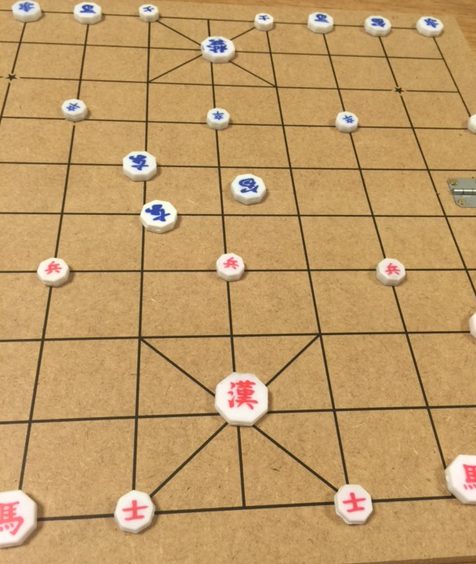
Finally, the forth brother is introduced. This is also a brother of Shogi and is popular in the Korean Peninsula. Janggi has many elements similar to Xiangqi’s, but still has its unique moves.
The similar parts are as follows. Pieces are placed at the intersections of the board lines. Kyu is set at the rear-center of the camps. Types of pieces and their moves are also very much like those of Xiangqi’s.
However, Elephants can enter the opponent’s camp since there is no river on Janggi board. Some moves of pieces are also different. Another difference is that passing is possible in Janggi.
Janggi is very similar to Xiangqi in appearance but different in rules.
Janggi’s pieces are the followings just like Xiangqi; “General,” “Advisor,”“Elephant,” “Chariot,” “Cannon,” and “Soldier.” The basic moves of Soldier and Elephant are different from those of Xiangqi pieces, and Cannon and Chariot also move differently in Kyumiya. It is interesting to find minute value differences here and there.
Shogi ancestor and brothers have been introduced today. The impressive things are the uniqueness of Shogi brothers which were developed in various regions adapting Caturaṅga to their own cir-cumstances and culture.
Learning those triggers me to have even more interests in Shogi’s uniqueness. Why is it called “Flying Chariot”? What is “Bishop”? How did this move emerge? Why did Happokei become “Knight” that can only move two steps forward? Why are Shogi boards set in these dimensions? Why are Shogi pieces shaped in this way?
I also find that Japanese Shogi is full of Japanese culture. The rule of reusable captured pieces is a typical distinctive feature of it. Additionally, cooperation is inevitable in offense since each piece’s move is limited besides that of Bishop and Flying Chariot.
The notion of “take many moves to circle King,” and the shape of pieces, pentagon are very Japa-nese.
I think that our interest and inquiries in Shogi are deepened by knowing Shogi brothers in the world. Please talk about them to children who just started Shogi.
Reference List
- 西條耕一, 2006,「将棋の日本伝来と世界の将棋」『電気通信』69(710),pp.36-40.
- 岡野伸, 2009,「チャンギ(韓国・朝鮮将棋)の歴史」『大阪商業大学アミューズメント産業研究所紀要』11,pp.103-126.
- 岡野伸, 2005,「タイの将棋『マックルック』」『大阪商業大学アミューズメント産業研究所紀要』7,pp.85-98.
- 増川宏一, 1996,『将棋の起源』平凡社.
- 安恵照剛監修, 2003,『将棋のひみつ 学研まんが 新ひみつシリーズ』学研.
